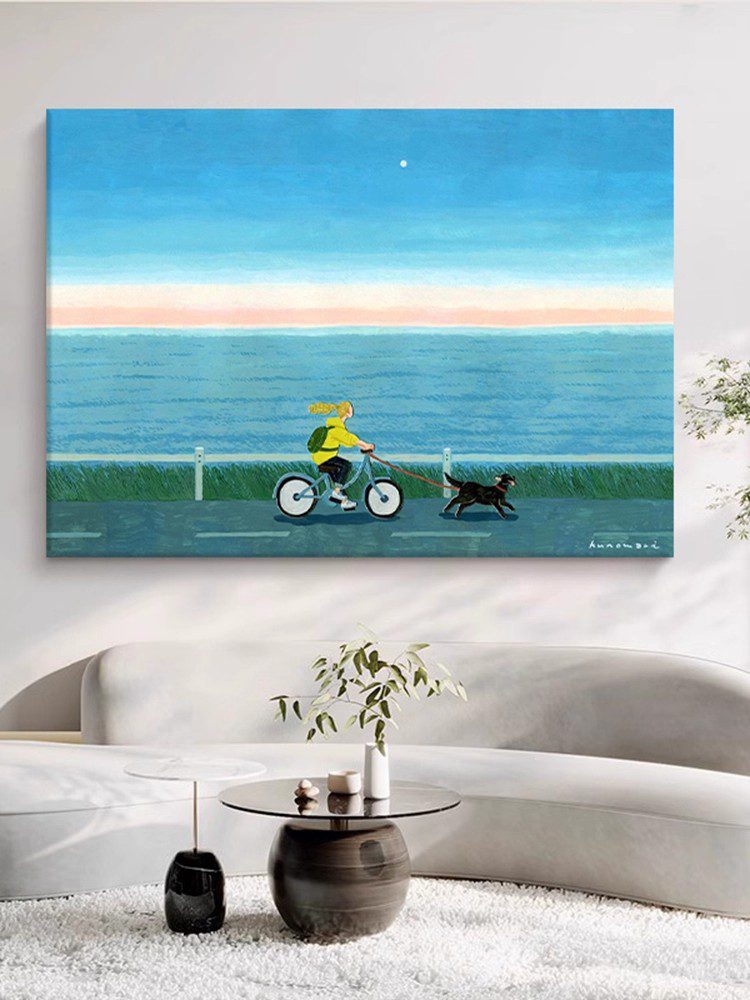Enhancing Creativity in Hand-Painted Oil Art: Strategies to Unlock Originality
Creativity in oil painting thrives when artists explore unconventional approaches, challenge their habits, and draw inspiration from diverse sources. Below are actionable methods to expand your artistic vision and infuse your work with fresh, innovative ideas.
Experimenting with Unconventional Materials and Techniques
- Mixed Media Integration: Combine oil paints with non-traditional materials like sand, leaves, fabric, or found objects. For example, embedding crumpled paper into wet paint can create organic textures that mimic natural surfaces, while dripping alcohol over a layer of oil paint produces unpredictable, marbled effects. These tactile elements add depth and narrative complexity.
- Alternative Tools: Replace brushes with palette knives, sponges, or even hands to alter mark-making. A palette knife can create bold, impasto strokes ideal for abstract landscapes, while finger painting allows for intuitive blending and soft edges. Experimenting with tools disrupts repetitive patterns and encourages spontaneous expression.
- Reverse Painting: Apply layers in reverse order, starting with details and finishing with broad backgrounds. This approach forces you to reconsider compositional hierarchy and may reveal unexpected focal points. For instance, painting a figure’s face first could lead to a more intimate, character-driven piece.
Drawing Inspiration from Diverse Disciplines and Experiences
- Cross-Disciplinary Exploration: Study music, literature, or dance for metaphorical inspiration. A jazz improvisation’s rhythm might translate into fluid, curvilinear brushstrokes, while a poem’s imagery could inspire a color palette or subject matter. Document these connections through sketches or notes to bridge conceptual gaps.
- Cultural and Historical Research: Delve into art movements, myths, or global traditions outside your usual focus. For example, exploring African mask symbolism might influence your portrayal of human emotion through abstracted facial features. Historical techniques, like Renaissance sfumato (soft blending), can also be adapted to modern contexts.
- Nature as a Muse: Spend time observing natural phenomena—the way light filters through trees, water reflects clouds, or rocks erode over time. Capture these observations through quick plein air studies or photo references. Nature’s unpredictability often sparks ideas for dynamic compositions or organic textures.
Challenging Compositional Norms and Perspectives
- Unconventional Viewpoints: Paint subjects from extreme angles (e.g., a bird’s-eye view of a city or a worm’s-eye view of a flower). This shifts the viewer’s relationship to the subject, creating tension or intrigue. For instance, a portrait painted from below might emphasize power or dominance.
- Abstracting Reality: Simplify or distort forms to focus on emotional essence rather than literal representation. A landscape with exaggerated, swirling trees could convey chaos or freedom, while a face rendered in geometric shapes might explore identity or fragmentation. Abstract elements invite viewers to interpret meaning, fostering engagement.
- Negative Space Exploration: Use empty areas to amplify the subject’s emotional impact. A small figure surrounded by vast, empty canvas might evoke loneliness or contemplation, while a crowded composition with minimal negative space could feel overwhelming or energetic. Experiment with balancing “less” and “more” to guide the viewer’s focus.
Embracing Limitations and Accidents as Creative Catalysts
- Conscious Constraints: Impose rules like using a limited color palette (e.g., monochrome with one accent hue) or restricting yourself to a single brush size. Limitations force creativity within boundaries, often leading to innovative solutions. For example, a monochrome painting might rely on texture and value contrast to convey mood.
- Accidental Discoveries: Allow “mistakes” to guide your process. A dripped paint blob could become a focal point, or an unintended blend of colors might inspire a new palette. Keep a sketchbook to record and revisit these accidents, turning them into deliberate techniques in future works.
- Series-Based Exploration: Create a cohesive body of work around a single theme or concept, such as “emotions through color” or “distorted portraits.” Working in series encourages deep exploration of ideas, revealing patterns or variations you might not notice in isolated pieces.
By integrating these strategies, artists can dismantle creative blocks and cultivate a practice rooted in curiosity and experimentation. The key lies in viewing each painting as a laboratory for innovation, where rules are guidelines rather than constraints, and originality emerges from the interplay of intention and spontaneity.
